![]()
Jutt and Bond was where most of us first saw Fawad Afzal Khan. He was a skinny, lanky, clean shaven guy with bangs. Soon after, we were surprised to see him as the lead singer of Entity Paradigm (EP), a Pakistani nu metal band, with his husky, soulful voice and that pained musician look. That was when we, the female population of Pakistan, said to one another,
“Hey, this guy’s not bad looking.”
But little did we know that he would soon be making waves and creating magic on TV and the big screen. By frequently featuring in commercials, a few songs and TV serials here and there, Fawad was slowly climbing the ladder of fame. His first film,
Khuda Kay Liye, earned him critical acclaim for his role of a confused young man who falls into the claws of religious fundamentalists.
Then one fine day in 2011, Fawad became Asher Hussain. That was when girls in Pakistan, and many older women too, kind of lost it. Then it was all Asher this and Asher that. Fawad not only played this character, in the
TV serial Humsafar, he became the character.
He was a compassionate, arrogant, loyal and absolutely beautiful man who loved his wife to the core. He befitted the definition of a ‘perfect man’ and we fell head-over-heels at every word he uttered from that gorgeously crooked mouth.
Our love for Fawad followed to his next romantic drama,
Zindagi Gulzar Hai, where again he played a stubborn, soulful and heart-meltingly adorable guy who is just the right amount of romantic.
When the news of this hunk starring in a Bollywood movie reached our ears, our reaction was,
“Woah”
And that word or no words perhaps, will be good enough to describe the exhilaration we feel over
Fawad crossing the border and acting in a movie that is surely a blockbuster and is giving him the global fame he surely deserves.
Why? Well, of course, because this man is undeniably beautiful! But that’s not all.
Here are 10 reasons why I think Fawad is so unquestionably yummy:
1. His eyes
That piercing look he gives you – that could just make you cry... with joy.
[caption id="" align="alignnone" width="245"]
![]()
Photo: Tumblr[/caption]
2. His music
The way he plays the guitar and sings like his life depended on it. *melting*
[caption id="" align="alignnone" width="500"]
![]()
Photo: Tumblr[/caption]
3. His boy-next-door smile
The way he looks down shyly, right before he looks up at you and flashes that dreamy smile.
[caption id="" align="alignnone" width="245"]
![]()
Photo: Tumblr[/caption]
4. The way he blinks
I bet you never thought blinking could look so seductive, did you? Well, look for yourself!
[caption id="" align="alignnone" width="500"]
![]()
Photo: Tumblr[/caption]
5. The ideal son-in-law
He is the perfect guy to take home to your parents; with his honest, believable face and that ‘I’d do anything for you’ demeanour, I guarantee he would have your family bewitched. Yup, he’d totally burn his hand with hot chai to keep you safe.
[caption id="" align="alignnone" width="245"]
![]()
Photo: Tumblr[/caption]
6. That stubble!
OMG! OMG! OMG! That beard of his! How can
facial hair look so incredibly stunning?
[caption id="" align="alignnone" width="250"]
![]()
Photo: Tumblr[/caption]
7. That swagger
How he puts the entire screen on fire the minute he enters. Did I mention the suave beard?
[caption id="" align="alignnone" width="500"]
![]()
Photo: Tumblr[/caption]
8. The throaty chuckle
The way he squints his eyes, breaks into a dashing smile and surprises you further with a hearty chuckle. Yup, we’re dying.
[caption id="" align="alignnone" width="500"]
![]()
Photo: Tumblr[/caption]
9. What he wears
Whether he wears a suit, a waistcoat or a
sherwani, he always looks dapper as hell, with impeccably styled hair. Though I still prefer him in a sherwani. Yup, anyday.
[caption id="" align="alignnone" width="250"]
![]()
Photo: Tumblr[/caption]
10. His modesty
Though he’s taken over social media, and the hearts of all the girls in both Pakistan and India, Fawad remains humble and blushes every time he is praised. It’s adorable!
[caption id="" align="alignnone" width="500"]
![Keep Calm and Stare at Fawad Khan]()
Photo: Tumblr[/caption]
So, now you know why we’re hopelessly, helplessly and irrevocably smitten by him and his Greek god looks. Girls are dying to just be in the same room as him and boys (0bviously) want to be him. All of us counted the hours, minutes and seconds for
his new movie... just to be able to look at him some more.
[caption id="" align="alignnone" width="245"]
![]()
Photo: Tumblr[/caption]
After watching
Khoobsurat, first day first show, I reacted to it, just as all the women in the cinema hall reacted to it, with a huge and heartfelt,
“Hayeee”
Although the movie has the stunning Bollywood actress,
Sonam Kapoor, as the protagonist, it is Mr Khan that befits the title of the movie in every sense possible.
[embed width="620"]http://www.dailymotion.com/video/x21u7tt_sonam-kapoor-fawad-khan-look-smashing-in-khoobsurat-trailer_news[/embed]
Is the movie worth watching? Yes, definitely!
But is it the best movie ever? No, not even close!
The story is clichéd and annoyingly predictable. When you are introduced to all the characters, you can easily guess what each will do in the movie and how they'll end up.
The plot revolves around a clumsy Dr Mili Chakravarty (Sonam Kapoor) and her many endeavors, as she takes up a project to treat a Rajasthan royal by the name of Shekhar Rathore (
Aamir Raza). The Rathore family live in huge mansion and every thing about their lifestyle and mannerism signifies royalty. There is a lot of discipline in their house, administered by the royal wife Rani Nirmala (
Ratna Pathak), and Dr Mili just can't seem to adjust to all the rules. Then she meets the prince, Yuvraj Vikram Rathore (Fawad Khan), and that's when things start to get interesting.
[caption id="" align="alignnone" width="595"]
![]()
Photo: Khoobsurat Facebook page[/caption]
In the beginning, the pace was really fast and, personally, I think both Fawad and Sonam deserved a spicier entry (it is a Bollywood chick flick after all). Also, the scene where both their characters meet for the first time is abrupt. Had it been a stronger and funner meeting, their relationship would've seemed more interesting.
[caption id="" align="alignnone" width="595"]
![]()
Photo: Khoobsurat Facebook page[/caption]
Another fun character was Dr Mili's mother Manju (
Kiron Kher). As always, Kher plays a typically loud and overprotective Punjabi mother but she does the role justice and adds humour to the storyline.
[caption id="" align="alignnone" width="537"]
![]()
Photo: Khoobsurat Facebook page[/caption]
Sonam's character was cute and her acting was pretty likeable this time round. While she was full of energy, Fawad's character was intense and sombre, which he played perfectly.
[caption id="" align="alignnone" width="476"]
![]()
Photo: Khoobsurat Facebook page[/caption]
Many reviews say that
Fawad overshadowed Sonam. Perhaps this is because Fawad's acting is different than a typical Bollywood actor's. Sonam is not a bad actress but her performance was not as natural and easy as Fawad made it his seem.
[caption id="" align="alignnone" width="595"]
![]()
Photo: Khoobsurat Facebook page[/caption]
If you compare Fawad to
Ali Zafar, who has also been trying his luck across the border, Fawad remains real on screen while Ali, although very talented, seems like he is trying to hard to impress the Indian audience and ends up crossing the line to ‘overacting’. This is why Ali Zafar would do well in comical roles whereas Fawad would excel in roles that highlight his raw and strong expressions.
Popular Indian film critic
Anupama Chopra described the movie,
“Khoobsurat is sweet, benign, and bland.”
The ending of
Khoobsurat was typical, mediocre and, for a lack of a better word, lazy. Fawad is the saving grace of the movie and, all in all, money well spent. I’d surely recommend everyone to watch it.
Here are five of my favourite moments from the film:
1. Fawad is as royal as a prince can be and, throughout the movie, Sonam shoves him around. It’s incredibly cute because he’s so skinny and often looks shaken when she shoves him. This is during a phase when he really doesn't like her; hence, his expressions are priceless.
[caption id="" align="alignnone" width="500"]
![]()
Photo: Tumblr[/caption]
2. When Sonam confesses out loud to having dirty thoughts about him and he confesses the same to himself (in his head). They both are drunk, this scene is extremely adorable!
[caption id="" align="alignnone" width="500"]
![]()
Photo: Tumblr[/caption]
3. When he sees Sonam dancing in her pjs and is shocked by her craziness.
Engine ki seeti is one of the best songs of the movie.
[caption id="" align="alignnone" width="500"]
![Keep Calm and Stare at Fawad Khan]()
Photo: Tumblr[/caption]
[embed width="620"]http://www.dailymotion.com/video/x23cpia_engine-ki-seeti-official-video-song-khoobsurat-sonam-kapoor-fawad-khan_music[/embed]
4. How throughout the movie he hates that she wears short clothes and sits ‘inappropriately’.
[caption id="" align="alignnone" width="500"]
![]()
Photo: Tumblr[/caption]
5. The kisses – I like how they didn't make it gross and kept it adorably decent. As a random aunty sitting behind me in the cinema perfectly explained it,
“He didn't do real kissing because he is Pakistani.”
[caption id="" align="alignnone" width="245"]
![image]()
Photo: Tumblr[/caption]
For me, he is what will sell
Khoobsurat to the viewers. I don’t about you guys, but I think Fawad has made this country, and us girls in particular, really proud. So make sure you watch this movie and get smitten by the beautiful phenomenon that is Fawad Khan.

 Although it is a laugh out loud comedy with countless one-liners, there is a serious thread woven into the fabric of the story. Aun is basically the product of a woman only household- he may not realise it but his father’s absence has left a gaping hole in his life. Similarly, Zara has been raised single-handedly by her military officer father and doting grandfather, played so well by Irfan Khoosat. She has not learned the small feminine tricks most females take for granted.
The most splendid thing about this entire serial is the complete lack of moral fiber or introspection in either hero or heroine. Both are busy trying to manipulate every situation to satisfy their own ends.
Osman Khalid Butt is simply brilliant as Aun. He has come a long way from his internet parodies of Humsafar and the slightly stiff looking Mayer in Aik Nayee Cinderella. Such a busy young man - writing scripts for films like Siyah, acting in dramas and taking part in literary festivals - he might just be our own desi version of James Franco, only much better looking.
Zara is a wonderful mixture of sweet and tart that Maya Ali plays with great charm.
Although it is a laugh out loud comedy with countless one-liners, there is a serious thread woven into the fabric of the story. Aun is basically the product of a woman only household- he may not realise it but his father’s absence has left a gaping hole in his life. Similarly, Zara has been raised single-handedly by her military officer father and doting grandfather, played so well by Irfan Khoosat. She has not learned the small feminine tricks most females take for granted.
The most splendid thing about this entire serial is the complete lack of moral fiber or introspection in either hero or heroine. Both are busy trying to manipulate every situation to satisfy their own ends.
Osman Khalid Butt is simply brilliant as Aun. He has come a long way from his internet parodies of Humsafar and the slightly stiff looking Mayer in Aik Nayee Cinderella. Such a busy young man - writing scripts for films like Siyah, acting in dramas and taking part in literary festivals - he might just be our own desi version of James Franco, only much better looking.
Zara is a wonderful mixture of sweet and tart that Maya Ali plays with great charm.
 This is truly a next generation romance where the problems are more about a lack of maturity than any plotting mother-in-laws or aunts with agendas. My favourite scene so far had to be their wedding night. An unimpressed Zara chews gum to kill the boredom while her by now utterly disgusted looking groom Aun cannot be bothered to think of anything to say to make her like him.
One of the great strengths of Faiza Iftikhar’s writing is her ability to create nuanced characters that we can all recognise from our daily lives. Aun’s loud but wise Punjabi grandmother, his sweet but sad Urdu speaking mother and his combative Phupo are all played perfectly by Nasreen Qureshi, Hina Bayat and Sabreen Hasbani respectively. Haissem Hussain has brought out the best from his entire team and moves the narrative along at a rapid pace giving it his signature ‘it should have been a movie’ look.
This is truly a next generation romance where the problems are more about a lack of maturity than any plotting mother-in-laws or aunts with agendas. My favourite scene so far had to be their wedding night. An unimpressed Zara chews gum to kill the boredom while her by now utterly disgusted looking groom Aun cannot be bothered to think of anything to say to make her like him.
One of the great strengths of Faiza Iftikhar’s writing is her ability to create nuanced characters that we can all recognise from our daily lives. Aun’s loud but wise Punjabi grandmother, his sweet but sad Urdu speaking mother and his combative Phupo are all played perfectly by Nasreen Qureshi, Hina Bayat and Sabreen Hasbani respectively. Haissem Hussain has brought out the best from his entire team and moves the narrative along at a rapid pace giving it his signature ‘it should have been a movie’ look.
 As in all great comedies, it’s all about the chemistry, that intangible spark that is so obvious when it’s lacking but hard to define when it’s there. Aun and his intellectually challenged friend Manzar (well played by Mukarram Kaleem) seem to have it by the bucketful. Their scenes are a treat to watch. No matter how dire a situation Aun is in, Manzar can be relied on to make it even worse with one hare-brained suggestion after another. Yet despite all the turmoil and confusion there is a strong vein of real affection between all the friends and family members, just as in real family, which binds them all together.
After a spate of social message oriented and overtly ‘preachy’ serials, Aun Zara comes as a welcome relief. This is truly relaxing viewing for families especially around Ramazan. It does not patronise the viewer and if there is a theme, according to the writer it is:
As in all great comedies, it’s all about the chemistry, that intangible spark that is so obvious when it’s lacking but hard to define when it’s there. Aun and his intellectually challenged friend Manzar (well played by Mukarram Kaleem) seem to have it by the bucketful. Their scenes are a treat to watch. No matter how dire a situation Aun is in, Manzar can be relied on to make it even worse with one hare-brained suggestion after another. Yet despite all the turmoil and confusion there is a strong vein of real affection between all the friends and family members, just as in real family, which binds them all together.
After a spate of social message oriented and overtly ‘preachy’ serials, Aun Zara comes as a welcome relief. This is truly relaxing viewing for families especially around Ramazan. It does not patronise the viewer and if there is a theme, according to the writer it is:

 But while she’s being lauded as just what kids in Pakistan need, her
But while she’s being lauded as just what kids in Pakistan need, her 

 Photo: Screenshot from Pemra's website[/caption]
There are 27 complaints against Abb Tak on Pemra’s website, most of them expressing outrage towards the episode in question.
Following are a few of the complaints:
Photo: Screenshot from Pemra's website[/caption]
There are 27 complaints against Abb Tak on Pemra’s website, most of them expressing outrage towards the episode in question.
Following are a few of the complaints:
 Photo: Screenshot from Pemra's website[/caption]
This will open a page asking specifically for the medium one wishes to complain against. If the complaint is against a show on a television channel, then the ‘TV Channel’ button is to be clicked.
[caption id="" align="alignnone" width="500"]
Photo: Screenshot from Pemra's website[/caption]
This will open a page asking specifically for the medium one wishes to complain against. If the complaint is against a show on a television channel, then the ‘TV Channel’ button is to be clicked.
[caption id="" align="alignnone" width="500"] Photo: Screenshot from Pemra's website[/caption]
This will lead to a form that asks for the name, CNIC number, city and phone number of the complainant.
There is an optional box for anyone who wants to provide their email address as well. The next box will ask you to choose your channel. The form further asks for the specific complaint to be written in words, as well as suggestions for
Photo: Screenshot from Pemra's website[/caption]
This will lead to a form that asks for the name, CNIC number, city and phone number of the complainant.
There is an optional box for anyone who wants to provide their email address as well. The next box will ask you to choose your channel. The form further asks for the specific complaint to be written in words, as well as suggestions for  Photo: Screenshot from Pemra's website[/caption]
So the next time you watch something on TV that is in violation of basic
Photo: Screenshot from Pemra's website[/caption]
So the next time you watch something on TV that is in violation of basic 

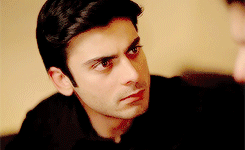 Photo: Tumblr[/caption]
2. His music
The way he plays the guitar and sings like his life depended on it. *melting*
[caption id="" align="alignnone" width="500"]
Photo: Tumblr[/caption]
2. His music
The way he plays the guitar and sings like his life depended on it. *melting*
[caption id="" align="alignnone" width="500"] Photo: Tumblr[/caption]
3. His boy-next-door smile
The way he looks down shyly, right before he looks up at you and flashes that dreamy smile.
[caption id="" align="alignnone" width="245"]
Photo: Tumblr[/caption]
3. His boy-next-door smile
The way he looks down shyly, right before he looks up at you and flashes that dreamy smile.
[caption id="" align="alignnone" width="245"]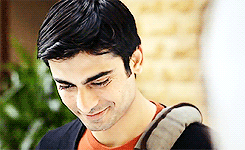 Photo: Tumblr[/caption]
4. The way he blinks
I bet you never thought blinking could look so seductive, did you? Well, look for yourself!
[caption id="" align="alignnone" width="500"]
Photo: Tumblr[/caption]
4. The way he blinks
I bet you never thought blinking could look so seductive, did you? Well, look for yourself!
[caption id="" align="alignnone" width="500"]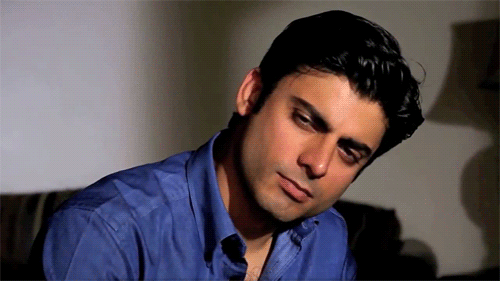 Photo: Tumblr[/caption]
5. The ideal son-in-law
He is the perfect guy to take home to your parents; with his honest, believable face and that ‘I’d do anything for you’ demeanour, I guarantee he would have your family bewitched. Yup, he’d totally burn his hand with hot chai to keep you safe.
[caption id="" align="alignnone" width="245"]
Photo: Tumblr[/caption]
5. The ideal son-in-law
He is the perfect guy to take home to your parents; with his honest, believable face and that ‘I’d do anything for you’ demeanour, I guarantee he would have your family bewitched. Yup, he’d totally burn his hand with hot chai to keep you safe.
[caption id="" align="alignnone" width="245"]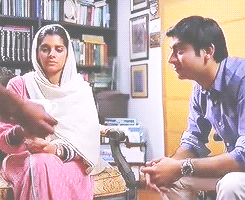 Photo: Tumblr[/caption]
6. That stubble!
OMG! OMG! OMG! That beard of his! How can
Photo: Tumblr[/caption]
6. That stubble!
OMG! OMG! OMG! That beard of his! How can  Photo: Tumblr[/caption]
7. That swagger
How he puts the entire screen on fire the minute he enters. Did I mention the suave beard?
[caption id="" align="alignnone" width="500"]
Photo: Tumblr[/caption]
7. That swagger
How he puts the entire screen on fire the minute he enters. Did I mention the suave beard?
[caption id="" align="alignnone" width="500"] Photo: Tumblr[/caption]
8. The throaty chuckle
The way he squints his eyes, breaks into a dashing smile and surprises you further with a hearty chuckle. Yup, we’re dying.
[caption id="" align="alignnone" width="500"]
Photo: Tumblr[/caption]
8. The throaty chuckle
The way he squints his eyes, breaks into a dashing smile and surprises you further with a hearty chuckle. Yup, we’re dying.
[caption id="" align="alignnone" width="500"]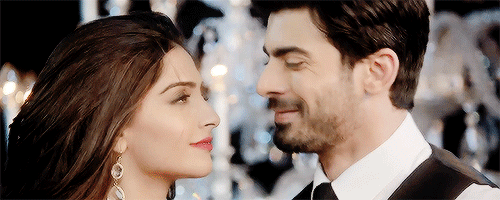 Photo: Tumblr[/caption]
9. What he wears
Whether he wears a suit, a waistcoat or a sherwani, he always looks dapper as hell, with impeccably styled hair. Though I still prefer him in a sherwani. Yup, anyday.
[caption id="" align="alignnone" width="250"]
Photo: Tumblr[/caption]
9. What he wears
Whether he wears a suit, a waistcoat or a sherwani, he always looks dapper as hell, with impeccably styled hair. Though I still prefer him in a sherwani. Yup, anyday.
[caption id="" align="alignnone" width="250"] Photo: Tumblr[/caption]
10. His modesty
Though he’s taken over social media, and the hearts of all the girls in both Pakistan and India, Fawad remains humble and blushes every time he is praised. It’s adorable!
[caption id="" align="alignnone" width="500"]
Photo: Tumblr[/caption]
10. His modesty
Though he’s taken over social media, and the hearts of all the girls in both Pakistan and India, Fawad remains humble and blushes every time he is praised. It’s adorable!
[caption id="" align="alignnone" width="500"] Photo: Tumblr[/caption]
So, now you know why we’re hopelessly, helplessly and irrevocably smitten by him and his Greek god looks. Girls are dying to just be in the same room as him and boys (0bviously) want to be him. All of us counted the hours, minutes and seconds for
Photo: Tumblr[/caption]
So, now you know why we’re hopelessly, helplessly and irrevocably smitten by him and his Greek god looks. Girls are dying to just be in the same room as him and boys (0bviously) want to be him. All of us counted the hours, minutes and seconds for 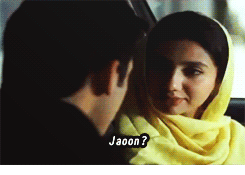 Photo: Tumblr[/caption]
After watching
Photo: Tumblr[/caption]
After watching  Photo: Khoobsurat Facebook page[/caption]
In the beginning, the pace was really fast and, personally, I think both Fawad and Sonam deserved a spicier entry (it is a Bollywood chick flick after all). Also, the scene where both their characters meet for the first time is abrupt. Had it been a stronger and funner meeting, their relationship would've seemed more interesting.
[caption id="" align="alignnone" width="595"]
Photo: Khoobsurat Facebook page[/caption]
In the beginning, the pace was really fast and, personally, I think both Fawad and Sonam deserved a spicier entry (it is a Bollywood chick flick after all). Also, the scene where both their characters meet for the first time is abrupt. Had it been a stronger and funner meeting, their relationship would've seemed more interesting.
[caption id="" align="alignnone" width="595"]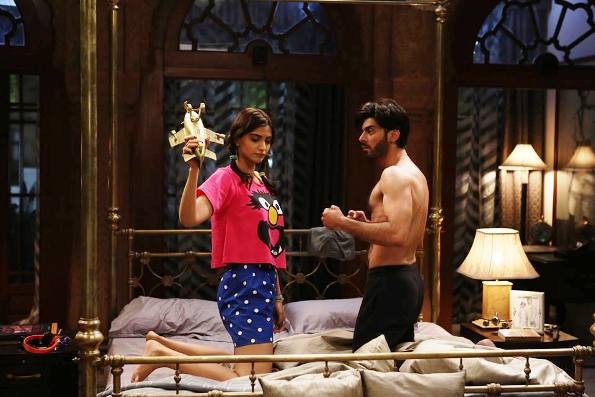 Photo: Khoobsurat Facebook page[/caption]
Another fun character was Dr Mili's mother Manju (
Photo: Khoobsurat Facebook page[/caption]
Another fun character was Dr Mili's mother Manju ( Photo: Khoobsurat Facebook page[/caption]
Sonam's character was cute and her acting was pretty likeable this time round. While she was full of energy, Fawad's character was intense and sombre, which he played perfectly.
[caption id="" align="alignnone" width="476"]
Photo: Khoobsurat Facebook page[/caption]
Sonam's character was cute and her acting was pretty likeable this time round. While she was full of energy, Fawad's character was intense and sombre, which he played perfectly.
[caption id="" align="alignnone" width="476"] Photo: Khoobsurat Facebook page[/caption]
Many reviews say that
Photo: Khoobsurat Facebook page[/caption]
Many reviews say that  Photo: Khoobsurat Facebook page[/caption]
If you compare Fawad to
Photo: Khoobsurat Facebook page[/caption]
If you compare Fawad to 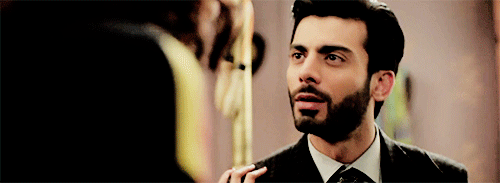 Photo: Tumblr[/caption]
2. When Sonam confesses out loud to having dirty thoughts about him and he confesses the same to himself (in his head). They both are drunk, this scene is extremely adorable!
[caption id="" align="alignnone" width="500"]
Photo: Tumblr[/caption]
2. When Sonam confesses out loud to having dirty thoughts about him and he confesses the same to himself (in his head). They both are drunk, this scene is extremely adorable!
[caption id="" align="alignnone" width="500"]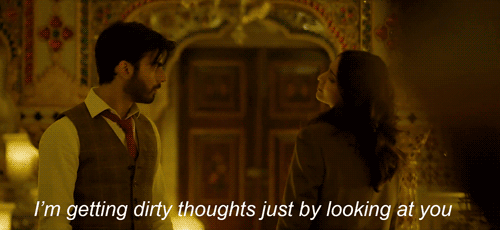 Photo: Tumblr[/caption]
3. When he sees Sonam dancing in her pjs and is shocked by her craziness. Engine ki seeti is one of the best songs of the movie.
[caption id="" align="alignnone" width="500"]
Photo: Tumblr[/caption]
3. When he sees Sonam dancing in her pjs and is shocked by her craziness. Engine ki seeti is one of the best songs of the movie.
[caption id="" align="alignnone" width="500"] Photo: Tumblr[/caption]
[embed width="620"]http://www.dailymotion.com/video/x23cpia_engine-ki-seeti-official-video-song-khoobsurat-sonam-kapoor-fawad-khan_music[/embed]
4. How throughout the movie he hates that she wears short clothes and sits ‘inappropriately’.
[caption id="" align="alignnone" width="500"]
Photo: Tumblr[/caption]
[embed width="620"]http://www.dailymotion.com/video/x23cpia_engine-ki-seeti-official-video-song-khoobsurat-sonam-kapoor-fawad-khan_music[/embed]
4. How throughout the movie he hates that she wears short clothes and sits ‘inappropriately’.
[caption id="" align="alignnone" width="500"] Photo: Tumblr[/caption]
5. The kisses – I like how they didn't make it gross and kept it adorably decent. As a random aunty sitting behind me in the cinema perfectly explained it,
Photo: Tumblr[/caption]
5. The kisses – I like how they didn't make it gross and kept it adorably decent. As a random aunty sitting behind me in the cinema perfectly explained it,
 Photo: Tumblr[/caption]
For me, he is what will sell Khoobsurat to the viewers. I don’t about you guys, but I think Fawad has made this country, and us girls in particular, really proud. So make sure you watch this movie and get smitten by the beautiful phenomenon that is Fawad Khan.
Photo: Tumblr[/caption]
For me, he is what will sell Khoobsurat to the viewers. I don’t about you guys, but I think Fawad has made this country, and us girls in particular, really proud. So make sure you watch this movie and get smitten by the beautiful phenomenon that is Fawad Khan.

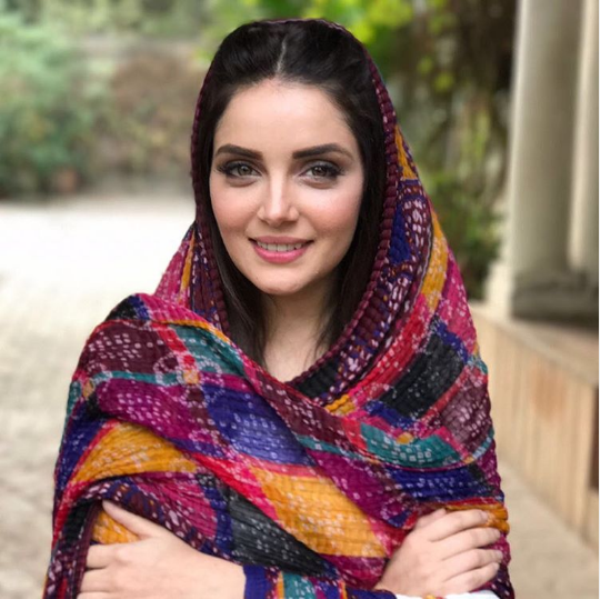 Photo: Facebook[/caption]
Resultantly, Farris is heartbroken after seeing the love of his life being wed to his brother. Thus, he decides to do the classic
Photo: Facebook[/caption]
Resultantly, Farris is heartbroken after seeing the love of his life being wed to his brother. Thus, he decides to do the classic 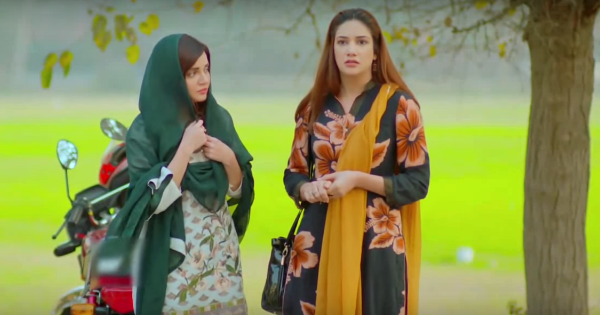 Photo: Screenshot[/caption]
Haya the Wife has her own problems. Her husband Harib is a complete nutcase. On the night of their wedding, he throws a fit and tells her to stand in the corner. Over the next couple of days, he throws fit after fit over the smallest things. This one time he commanded her to walk up and down the stairs for not telling him where she had gone. In another episode, he makes her stand on the table with a phone charger wire between her teeth because he thought she was lying to him. He’s basically someone who should be institutionalised but is roaming around freely, destroying a woman’s life because no one cares if a man is mentally unfit. All the society cares about is if a man is of a
Photo: Screenshot[/caption]
Haya the Wife has her own problems. Her husband Harib is a complete nutcase. On the night of their wedding, he throws a fit and tells her to stand in the corner. Over the next couple of days, he throws fit after fit over the smallest things. This one time he commanded her to walk up and down the stairs for not telling him where she had gone. In another episode, he makes her stand on the table with a phone charger wire between her teeth because he thought she was lying to him. He’s basically someone who should be institutionalised but is roaming around freely, destroying a woman’s life because no one cares if a man is mentally unfit. All the society cares about is if a man is of a 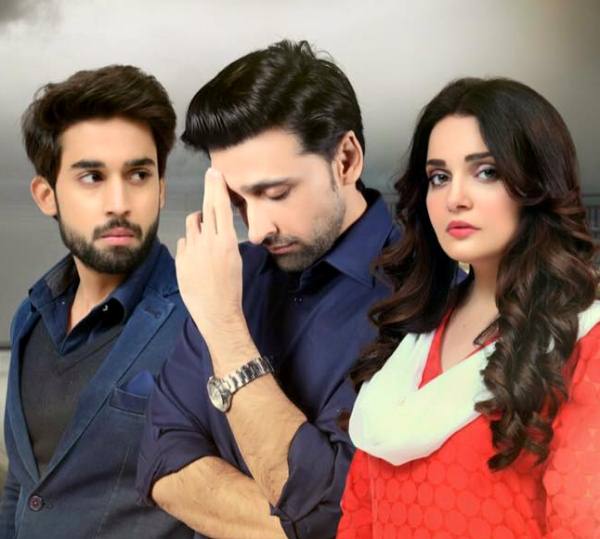 Photo: Facebook[/caption]
Armeena pulls off this role with surprising adeptness. She is seen as fearful and perplexed as she tries to make the best out of a truly horrifying situation, while her counterpart Sami is also quite convincing as Harib the Deranged. Resultantly, there is absolutely nothing wrong with their performance or deliveries.
We find out that Haya was
Photo: Facebook[/caption]
Armeena pulls off this role with surprising adeptness. She is seen as fearful and perplexed as she tries to make the best out of a truly horrifying situation, while her counterpart Sami is also quite convincing as Harib the Deranged. Resultantly, there is absolutely nothing wrong with their performance or deliveries.
We find out that Haya was 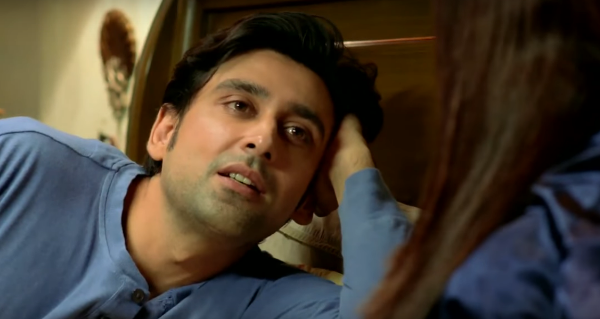 Photo: Screenshot[/caption]
Harib clearly has mental health issues that should be addressed, but as long as a man is able to ‘keep up appearances’, no one really questions what is going on in their heads or behind closed doors. It’s clear that Harib’s mother also
Photo: Screenshot[/caption]
Harib clearly has mental health issues that should be addressed, but as long as a man is able to ‘keep up appearances’, no one really questions what is going on in their heads or behind closed doors. It’s clear that Harib’s mother also 